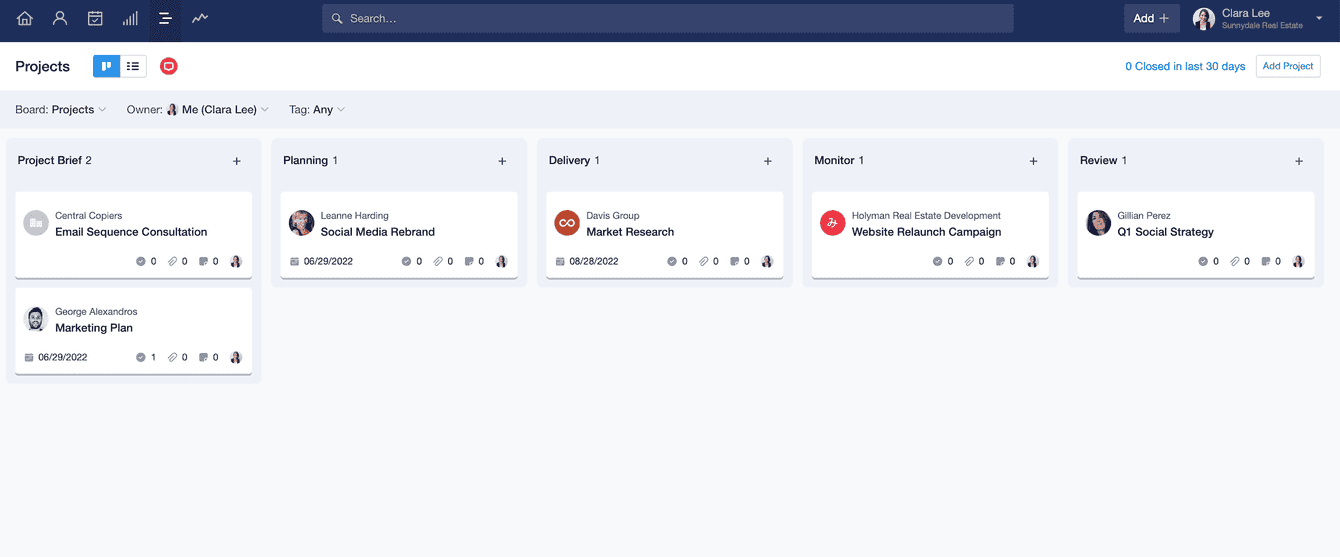For employees to work effectively, they need to be equipped with the right equipment, tools and techniques. This basic premise applies to all departments but is especially relevant when focusing on sales teams. It also underpins the discipline of sales enablement.
Our guide covers all the basics, so you can better understand what sales enablement is, why it's important, what the benefits are, and who should take responsibility. We’ll also explore some common techniques and tools that'll help your team meet or exceed targets.
What is sales enablement?
Sales enablement describes the process of equipping sales team members with the resources they need to close deals and meet sales targets.
TechTarget describes sales enablement as: "strategies, tools and processes that provide sales representatives with the ability to boost their productivity and revenue generation."
Think of it like fishing. You can have all the fundamentals necessary, including a basic understanding of how fishing works and what actions you need to take.
However, your chances of catching a fish will only increase if you have a high-quality fishing rod, use the right bait or lure and know where’s best to fish.
This same idea can also be applied to sales teams. Employees may have all the necessary communication skills and background knowledge. They understand, in a broad sense, how to sell. Yet, the likelihood of closing deals dramatically increases if they have access to high-quality tools, software solutions, information and content.
Why is sales enablement important?
Sales enablement can help you gain a competitive advantage. The better equipped your sales teams are, the greater opportunity they have to exceed the performance of rival sales teams.
Sales enablement also helps to make sales teams more valuable. As we covered in a previous blog post, one of the key challenges to modern sales is finding a balance between digital self-service sales and a more conventional approach, where a salesperson attempts to sell a product or service.
For many customers, self-service is now the default, and they're often relatively comfortable conducting research before making a final decision.
Modern sales teams need to provide information that's genuinely useful to customers.
For example, giving product or service information that helps make purchasing decisions easier or speeds up the buying process is especially ideal. Effective sales enablement provides salespeople with the right content and tools to do this.
In other words, a sales enablement strategy must sufficiently equip salespeople, enabling them to provide potential buyers with information and insights they aren’t able to find themselves.
Who is responsible for sales enablement?
Instinctively, you’d think sales enablement falls under the responsibility of the sales function.
However, we think sales enablement should be a joint initiative for both sales and marketing teams.
Communication and collaboration between these two departments are extremely important to develop a successful sales enablement strategy.
Also, responsibility can extend even further because C-suite executives, such as the CEO and CRO should be actively involved in sales enablement efforts.
Not only can senior management assist by allocating sufficient budgets to the sales and marketing departments and providing them with the necessary tools, but a Harvard Business Review article states that "sales advocacy from cross-functional leadership teams" is a hallmark of companies with low sales team attrition.
Of course, the lower your attrition rate, the better for long-term sales outcomes.
A great way to keep all these different groups on the same page is to create a vacancy for a sales enablement manager position. This role can be responsible for coordinating operations and implementing programs or initiatives.
Sales enablement benefits
An effective sales enablement strategy allows your organization to:
- Improve the tools and resources available to sales reps so that they can perform their duties more effectively
- Gain a more comprehensive understanding of the strengths and weaknesses of current sales strategies
- Identify trends that help to predict successful sales so that future sales efforts can be improved
- Become less reliant on high-performance sales team members by using proven approaches and tools companywide
- Refocus sales, marketing and C-suite efforts to boost business outcomes
- Make information easier for sales reps to access, speeding up sales processes and reducing delays.
Sales enablement techniques
These are some of the most common ways sales enablement is fulfilled:
Lead qualification
Lead qualification involves assessing potential customers or sales leads and predicting how likely they'll become paying customers.
Sales leads can be scored based on many factors, including buying power or authority, how urgent their needs are, and similarities with existing customers.
The lead qualification process allows sales teams to focus efforts on the targets that offer the most potential and can reduce time wasted on low-probability leads.
Performance tracking
Monitoring sales enablement activities can help you devise approaches to improve, and also, double down on works well.
This could include tracking the performance of sales reps, such as the number of sales closed, the number of leads generated or demos given.
However, it can also mean tracking the performance of digital content across multiple channels or measuring the reach of email marketing campaigns.
Training and coaching
Sales training and coaching activities play a vital role in sales enablement. Successful programs equip team members with the skills, knowledge and techniques necessary to excel in sales.
Training can also be used to onboard new hires, reinforce existing ideas, teach new approaches, highlight areas of weakness and establish shared objectives.
Tools for sales enablement
Here’s some of the tools you can use to help enable your sales team:
Sales enablement software
These applications serve as all-in-one solutions with tools for customer relationship management (CRM), email tracking, sales performance management, and content management, allowing sales and marketing teams to align properly.
CRM software
CRM software, like Capsule, allows sales teams and other departments to access vital data on existing and potential customers, including contact details, preferences and buying behaviors.
Users can also view past communications with individuals, track sales opportunities and centralize data that would otherwise be spread across various email accounts, spreadsheets, databases and departments.
Sales onboarding software
Onboarding new hires must be brought up to speed as quickly as possible, to maximize ROI.
Sales onboarding software is designed to assist with this by serving as a centralized location for new hires to access learning materials, follow step-by-step instructions and understand the sales process.
Content management system
A content management system (CMS) allows you to manage content creation, publication and distribution.
It centralizes content, including website copy, blog posts, email templates and more. While marketing departments primarily use content management systems, sales teams can benefit, too.
Sales enablement content types
Content is a key part of any sales enablement program. It supports salespeople during conversations with prospects. It’s used to educate, convince and convert prospects. Here’s what content can be used and how:
Email templates
Email templates make it much easier for sales teams to communicate with leads and reach out to existing customers.
A great email template has an eye-catching subject line, interesting or useful content, and a call to action (CTA) that encourages the reader to perform a desired action.
Using templates speeds up email creation, freeing up more time for core sales activities.
Case studies
A factual report of real events, such as a product or service used by a customer.
Potential buyers can use case studies to learn about the practical benefits of a particular solution or to see the results for themselves.
They can be thought of as a way to demonstrate proof that what you're selling actually works.
E-books
E-books are usually short digital books that provide valuable information to customers, encouraging users to make a purchase.
These digital publications can also help position your business and sales team as expert voices and trustworthy sources.
Whitepapers
A detailed document that outlines an issue or topic and presents your organization's perspective or approach to solving the problem.
Whitepapers also explore the features of the solution and can help promote a particular product, service, or methodology.
Blog posts
Marketing departments typically produce blog posts, but they’re also be used during the sales process.
A good blog post educates potential buyers or provides information that helps users decide whether to purchase a product or service.
Blog posts are also increasingly produced through AI-powered tools like Jasper or ChatGPT.
Sales scripts
Sales scripts provide structure to sales conversations. They should outline key talking points, sales pitches, and ideal responses to customer questions or statements.
It's best to avoid using scripts when selling, however, they can be useful as a planning tool, providing sales teams with a basic understanding of how a conversation should flow.
Your sales team should feel comfortable enough to adaptable and steer the conversation around your solution without a script.
Buyer personas
Buyer personas are representations of customers. They're fictional 'characters' representing what different types of customers are like. They’re created based on research and insights gathered from real customers.
Buyer personas describe what customers are like. They explain what their needs are, what challenges they face, and how they make purchasing decisions. They can be used for tailoring sales and marketing content to different target groups.
Unleash your sales team's full potential
A sales team can be filled with individual members who possess all of the necessary skills to achieve success. However, reaching their full potential will require your organization to provide them with the right tools, techniques, content, and information.
In an age where self-service is becoming the standard, sales teams must offer something special to customers. Essentially, sales should be less like salespeople and more like trusted experts with valuable insights to share.
When sales, marketing and the C-suite work together to fully enable and empower sales, everyone benefits from improved sales productivity, less time wasted on low-value sales leads, improved collaboration between different departments, and a greater focus on tried and tested techniques.
The result is better, more consistent sales figures and increased customer satisfaction.
Click here to learn more about Capsule CRM and access a 14-day free trial.






